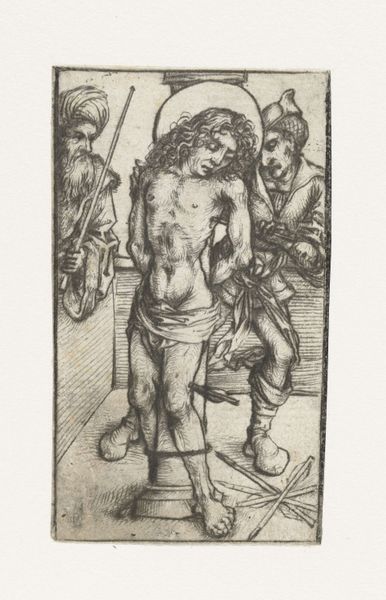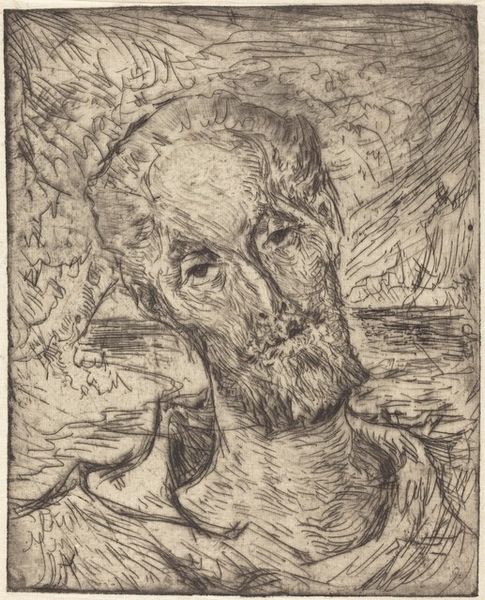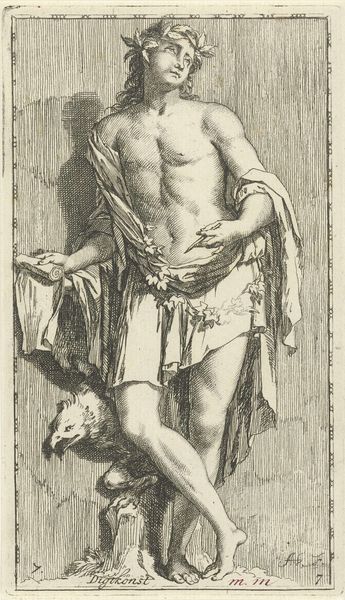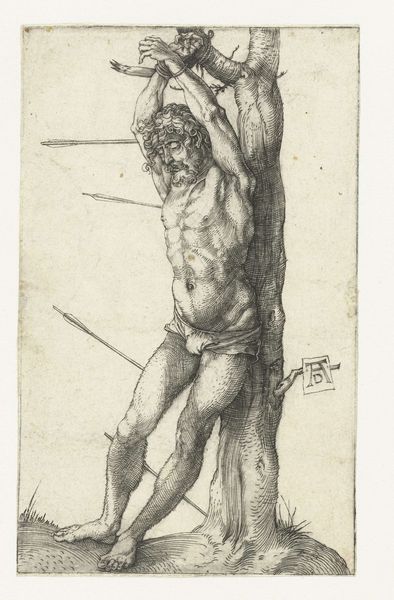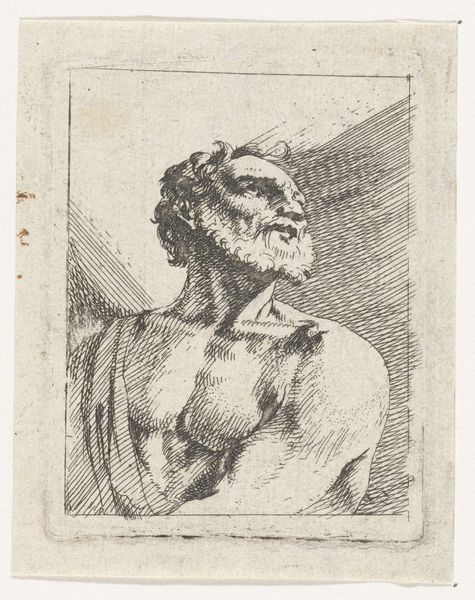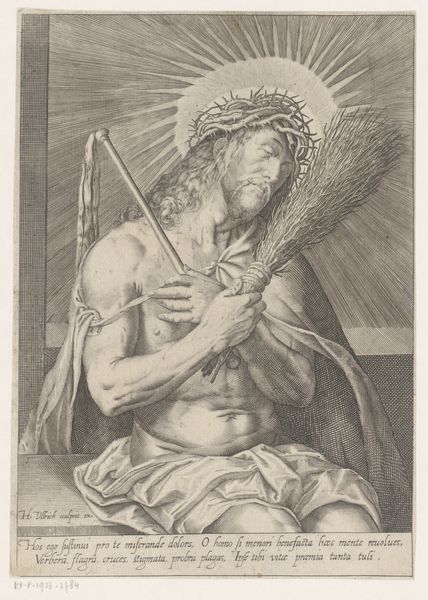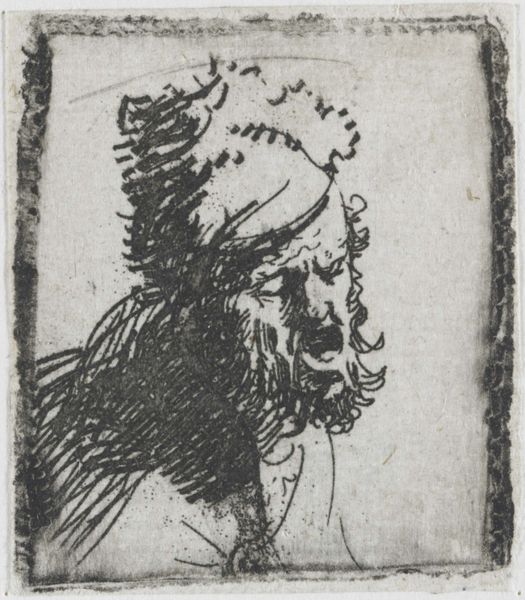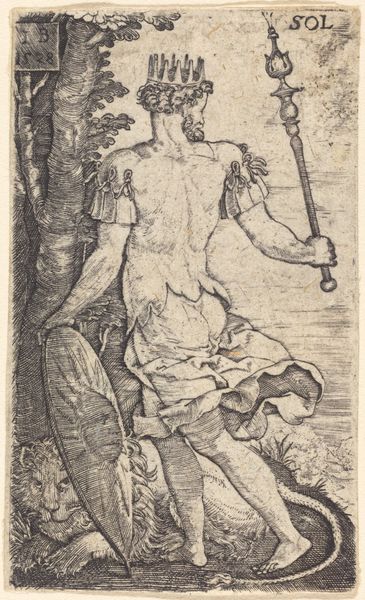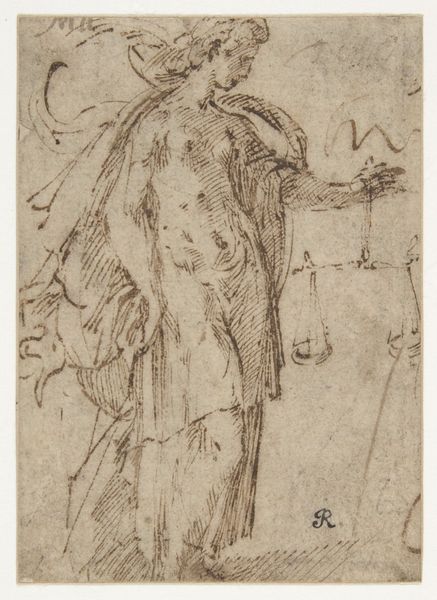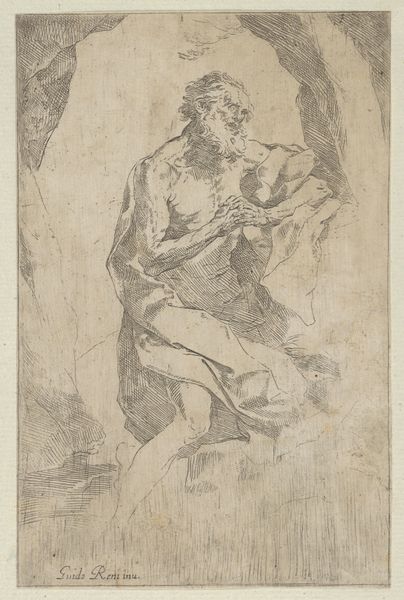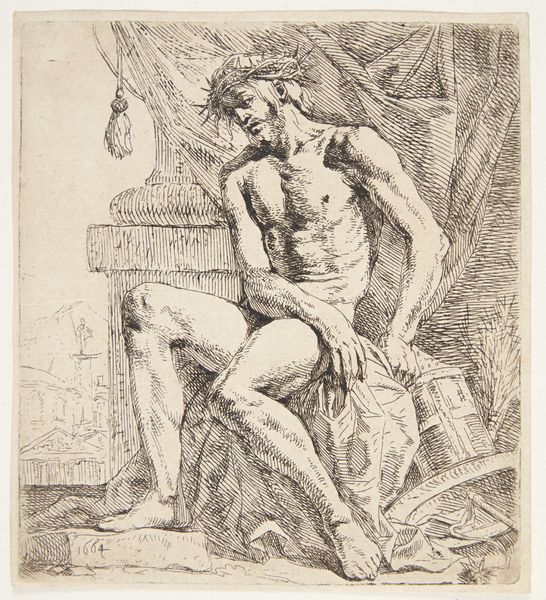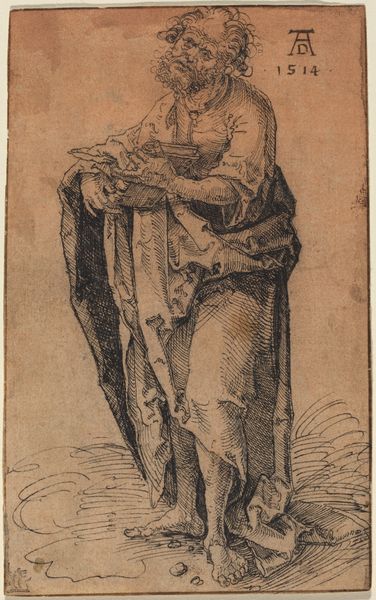
print, engraving
#
portrait
# print
#
figuration
#
italian-renaissance
#
engraving
Dimensions: height 112 mm, width 68 mm
Copyright: Rijks Museum: Open Domain
Albrecht Durer made this small print of ‘Christ as the Man of Sorrows’ using an etching technique, sometime around 1515. This was a relatively new medium at the time. Durer would have covered a metal plate with wax, drawn into it with a needle, and then bathed the plate in acid. The acid bites into the exposed lines, allowing for a very fine, detailed image to be created. Look closely, and you can see the incredible detail. The crown of thorns, the suffering in Christ’s face, the texture of the cloth draped around him. Etching was a key technology in the development of printmaking. By using acid, you could produce much more intricate designs than with a traditional woodcut. This in turn meant that images could be produced more quickly, and at a lower cost, than a painting or sculpture. As such, it played a key role in the wider distribution of images across Europe at the time. So, while Durer’s subject is the epitome of suffering, this print also speaks to a rising culture of commerce and consumption, as his images spread far and wide.
Comments
No comments
Be the first to comment and join the conversation on the ultimate creative platform.

